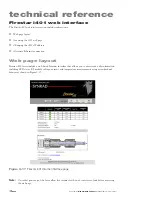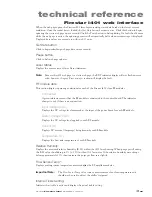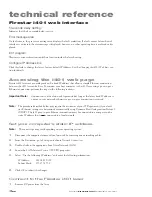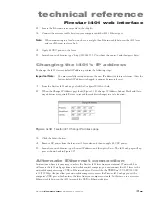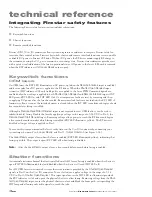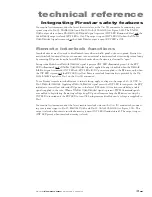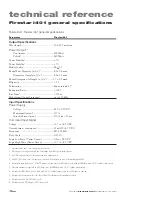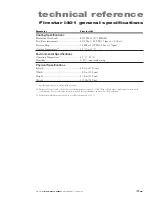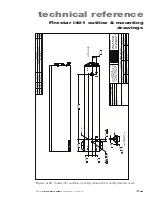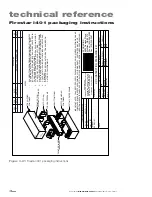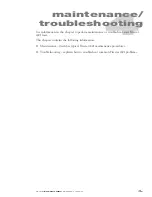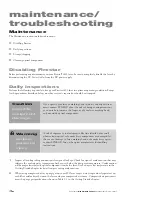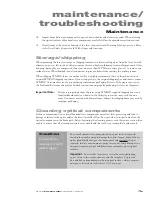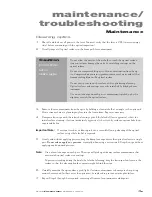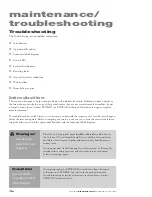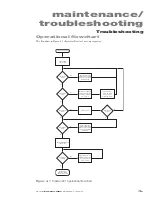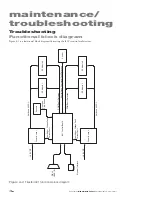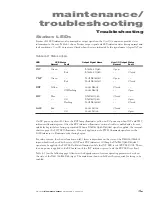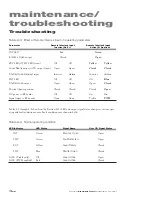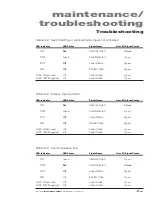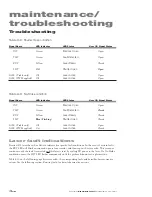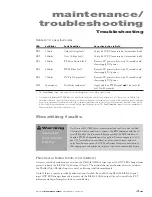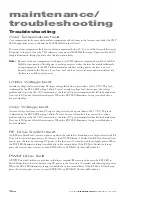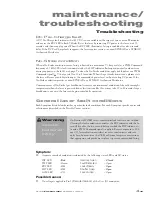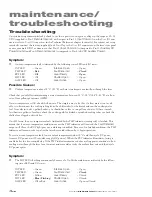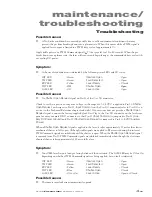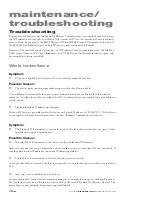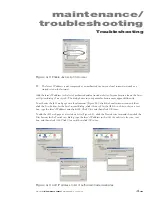
maintenance/
troubleshooting
4
4
Synrad
Firestar i401
operator’s manual
Maintenance
Danger
serious
personal
injury
Ensure that DC power to the laser is turned off and locked out before
inspecting optical components in the beam path.
Invisible CO
2
laser
radiation is emitted through the aperture. Corneal damage or blind-
ness may result from exposure to laser radiation.
Important Note:
Exercise great care when handling infrared optics; they are much more fragile than
common glass materials. Optical surfaces and coatings are easily damaged by rough
handling and improper cleaning methods.
Cleaning guidelines
■
Wear rubber or latex finger cots or rubber gloves (powder-free) to prevent contamination of optical
surfaces by dirt and skin oils.
■
Never handle optics with tools; always use gloved hands or fingers.
■
Hold optics by the outer edge; never touch the coated surface.
■
Always place optics lens tissue for protection; never place optics on hard or rough surfaces.
■
It may be necessary to use a cotton ball or fluffed cotton swab instead of a lens wipe to uniformly clean
the entire surface of small-diameter mounted optics.
■
Before using any cleaning agents, read Material Safety Data Sheets (MSDS) and observe all necessary
safety precautions.
Required cleaning materials
Table 4-1 lists the type and grade of materials required to properly clean optical surfaces.
Table 4-1
Required cleaning materials
Cleaning Material
Requirements
Finger cots or rubber gloves
Powder-free
Air bulb
Clean air bulb
Ethyl alcohol
Spectroscopic or reagent grade
Acetone
Spectroscopic or reagent grade
Lens wipe (preferred)
Optical (cleanroom) quality
Cotton balls or cotton swabs
High-quality surgical cotton/high-quality paper-bodied

